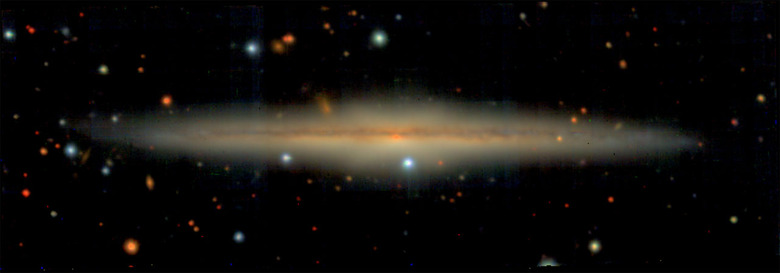Astronomers look at a cross-section of galaxy UGC 10738
There are some aspects of our galaxy that are extremely unique, at least as far as we know. The main aspect is our galaxy is the only one we know of that contains life. However, it turns out that other than supporting life, our galaxy is not exactly unique. Scientists have observed a cross-section of galaxy UGC 10738 as seen edge-on using the ESO Very Large Telescope in Chile.
The observation has revealed thick and thin discs within the galaxy. This observation is the first detailed cross-section of a galaxy that is broadly similar to our Milky Way. Astronomers say that the cross-section reveals that our galaxy evolved gradually instead of being the result of a violent mashup, which places some doubts on widely held beliefs about the creation of our galaxy.
UGC 10738 has thick and thin discs that are similar to those of the Milky Way. The finding suggests that the structures are not the result of a rare collision in the distant past with a smaller galaxy and are the product of a more gradual in peaceful change. That is a game-changing observation because it means that the Milky Way is typical rather than the result of some bizarre and rare cosmic accident.
Doctor Nicholas Scott, team leader for the research, says that the team's observations indicate that the thin and thick discs present in the Milky Way are a sort of "default" path of galaxy formation and evolution. Scott says the team believes galaxies with the structure and properties of the Milky Way are normal. Previously it was believed that the thick and thin discs in the Milky Way formed after a rare violent merger and therefore wouldn't be discovered in other spiral galaxies.

The team now believes that assumption was wrong, and our galaxy evolved naturally, suggesting that galaxies of its type are very common. The team also found that UGC 10738 has a thick disc containing mainly very old stars, as identified by their low ratio of iron to hydrogen and helium. The thin disk stars are more recent and contain more metal. UGC 10738 is about 320 million light-years away from Earth and is angled edge-on, giving scientists a good cross-section view of its structure.
